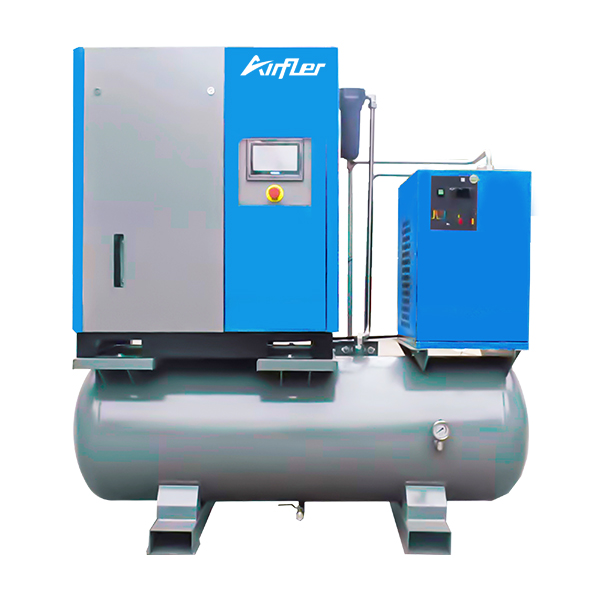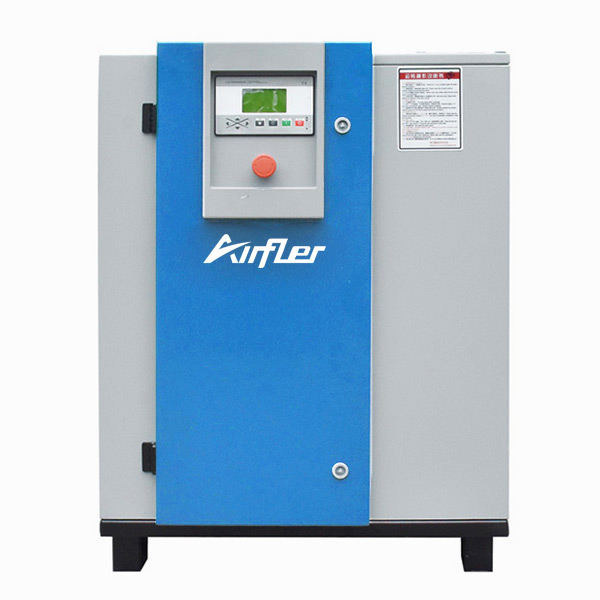I. Clarify Core Requirements
1. Calculate Air Demand
Estimate total air consumption:
Sum instantaneous and continuous air demand of all equipment (e.g., pneumatic tools, production lines) and add a 10%-20% buffer to accommodate fluctuations.
Convert all airflow units consistently (e.g., m³/min or CFM) to avoid selection errors due to unit mismatches.
2. Determine Operating Pressure
Set the baseline pressure based on the highest pressure requirement of downstream equipment.
Compensate for pipeline pressure loss by adding 0.05 MPa per 100 meters of pipeline length.
II. Adapt to Environmental Conditions
1. High-Dust Environments
Prioritize three-stage filtration (G4→F9→H13) systems.
Set the main filter pressure differential threshold to 0.3 bar for early clogging warnings.
Use variable-frequency screw compressors to dynamically adjust exhaust pressure and reduce dust penetration risks.
2. High-Humidity Environments
Install waterproof filter elements and reduce maximum working pressure by 5%-10% to prevent filter material swelling.
Integrate humidity sensors with electric heating modules:
Automatically increase temperature by 5-10°C when humidity exceeds 80%.
3. Low-Temperature Environments
Enforce a preheating program to ensure oil temperature reaches ≥20°C before startup, avoiding lubrication failure.
Use low-temperature-resistant lubricants and install temperature compensation systems to maintain operating temperatures at 40-60°C.
III. Energy Efficiency Optimization Strategies
1. Variable-Frequency Technology
Set loading pressure for variable-frequency screw compressors to 80%-90% of the rated value to minimize idle energy consumption.
Configure a 3-minute start-stop buffer to reduce instantaneous current surges and mechanical wear.
2. Cooling System Selection
For standard conditions: Configure cooling water flow at 3.7 L/s (15°C temperature difference).
For high-temperature environments: Use dual-stage cooling systems for enhanced heat dissipation.
IV. Parameter Verification & Maintenance
1. Calibration and Testing
Calibrate sensor errors to <1% quarterly.
Perform 30-minute no-load tests to verify pressure differential curve stability.
Establish an "Adjust-Evaluate-Iterate" mechanism to optimize parameters using operational data.
2. Full Lifecycle Management
Prioritize equipment with high energy efficiency ratings and long maintenance intervals to balance upfront costs, energy use, and upkeep.
Choose brands offering technical training and spare parts support to ensure rapid fault resolution.
Summary
By precisely matching air demand (flow rate, pressure), environmental conditions (dust, humidity, temperature), and technical solutions (variable frequency, filtration, cooling)—combined with dynamic parameter adjustments and continuous maintenance—operational efficiency of air compressors can be significantly improved while extending equipment lifespan.
 English
English 简体中文
简体中文 French
French English
English Portuguese
Portuguese Russian
Russian Spanish
Spanish






